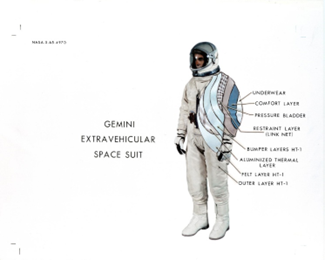International Developments
Like-Minded Developing Countries (LMDC):
-
- Context: It was in news regarding COP30.
- The LMDC is a large collective that represents nearly half of the world’s population, and consists of China, India, Pakistan, Indonesia, Bangladesh, Cuba, Egypt and several others.
- Uphold the principle of Common but Differentiated Responsibilities and Respective Capabilities (CBDR-RC) under the Paris Agreement.
- India supports LMDC stance emphasizing equity, climate justice, and sustainable development.
(TH)
Geography, Mapping, Ecology & Environment
Great Indian Bustard (Ardeotis nigriceps):
-
- Context: Supreme Court judge Justice P.S. Narasimha said many environmental law principles imported from the West such as “inter-generational equity” are anthropocentric and would hardly be of any assistance in protecting an endangered species from extinction.
- Status: Critically Endangered (IUCN); Schedule I under Wildlife (Protection) Act, 1972.
- Habitat: Arid & semi-arid grasslands — mainly Thar Desert (Rajasthan) and parts of Gujarat; minor populations in Maharashtra, Karnataka, Andhra Pradesh.
- Significance: One of the heaviest flying birds, flagship of India’s grassland ecosystem.
- Major Threats:
- Collision with power lines (major cause of death).
- Habitat loss from agriculture, mining, infrastructure.
- Predation and disturbance during breeding.
- Conservation Steps:
- Project GIB (2015-16) under IDWH Scheme (MoEFCC).
- Supreme Court (2021) order — underground power lines & bird diverters.
- Captive breeding centre at Sam, Jaisalmer (Rajasthan) by WII + Rajasthan Forest Dept.
- Grassland restoration via CAMPA & IDWH.
- Global Importance: India hosts almost the entire population; its conservation is critical for global survival.
(TH)
Rare Earth Hypothesis:
-
- Concept: The Rare Earth Hypothesis suggests that complex life is exceptionally rare in the universe, despite the vast number of planets.
- Reasoning: Emergence of intelligent life requires a combination of highly specific and rare astrophysical and geological conditions (like stable orbit, magnetic field, plate tectonics, large moon, right chemical composition, etc.).
- Origin: Proposed by Peter Ward and Donald Brownlee in their 2000 book “Rare Earth: Why Complex Life Is Uncommon in the Universe.”
- Contrast with Copernican Principle: The hypothesis challenges the Copernican Principle, which assumes Earth and life on it are not unique in the universe.
- Key Conditions for Complex Life: Requires a stable star (like the Sun), a planet in the habitable zone, plate tectonics to regulate CO₂, a protective magnetic field, and a large moon to stabilize the planet’s tilt.
- Astrobiological Significance: Influences search for extraterrestrial life programs (like SETI, exoplanet studies by NASA, ESA).
- Criticism: Critics argue it may underestimate the adaptability of life and that lack of evidence for extraterrestrial life may be due to limited observation, not rarity.
(TH)
Science & Technology
Integrated Main Parachute Airdrop Tests (IMAT):
-
- On 3 November 2025, at the Babina Field Firing Range (BFFR) in Jhansi, Uttar Pradesh, ISRO conducted a key drop test as part of the IMAT series for Gaganyaan.
- This test is part of a series of parachute qualification tests designed to validate the crew-module deceleration and landing system for India’s first human spaceflight mission.
- The deployment sequence begins with apex cover separation → drogue parachutes → pilot parachutes → main parachutes.
- The main parachutes use the “reefed inflation” technique: they first open partially (reefing), then fully open (disreefing) after a delay. In this test an extreme scenario of delay between two main parachutes opening was simulated to test asymmetric load conditions.
- Test specifics:
- A dummy mass equivalent to the Crew Module was dropped from an altitude of 2.5 km, using an Indian Air Force IL-76 aircraft.
- The parachute system deployed as planned; the drop article achieved a stable descent and soft landing, validating the robustness under design/extreme load conditions.
- The test included simulation of asymmetric deployment conditions (delay in disreefing) to verify structural integrity and load distribution under off-nominal conditions.

(TH)
Why do astronauts wear pressurised suits?
-
- Context: In Gaganyaan, India’s first human spaceflight mission, the ‘gaganyatris’ will be using the Russian Sokol KV2 suit manufactured by Zvezda.
- The suit consists of two layers: an inner pressure bladder made of rubberised polycaprolactam to remain airtight, and an outer restraint layer of white nylon canvas for structural support and protection.
- Purpose of Pressurisation: To maintain normal atmospheric pressure around the astronaut’s body in the vacuum of space, preventing body fluids from boiling (ebullism).
- Oxygen Supply: Provides breathable oxygen, as there is no air in space.
- Protection from Space Hazards: Shields against extreme temperatures (from -150°C to +120°C), cosmic radiation, and micrometeoroids.
- Mobility & Life Support:
- Includes life support systems for temperature control, CO₂ removal, and hydration.
- Allows astronauts to move, work, and perform tasks in space or during spacewalks (EVA – Extravehicular Activity).
- Pressure Management: Prevents decompression sickness (similar to “the bends” in divers) due to rapid exposure to low pressure.
- Additional Features: Communication systems, visors for UV and solar glare protection, and layers for mechanical protection.

(TH)
History, Art & Culture
Was INA founded by Subhas Bose?
-
- Context: INA not founded by Subhas Bose, he took up the reins only later, claims new book.

-
- According to the book, ‘The Forgotten Indian Prisoners of World War II’, authored by Gautam Hazarika, Netaji took over the INA only later and brought it wider recognition as a force against Britain.
- It was initially set up by the Japanese Army intelligence and Indian nationalists outside India to fight a common enemy, the British.
- According to the book, Captain Mohan Singh of the 14th Punjab Regiment in the British Indian Army became the first commander of the INA.
- Netaji reached Singapore in July 1943. During the interregnum, Rash Behari Bose kept alive the INA, which was then handed over to Netaji, who took it to greater heights.
(TH)
Important data/facts
Society & Social Justice
-
- An analysis of four million lab test reports by PharmEasy has revealed that one in two Indians tested showed high blood sugar levels, indicating widespread hyperglycaemia. Among those tested who had high blood sugar, 51.9% were men and 45.43 % were women.
Geography & Environment
-
- In 2024, India registered the largest absolute increase in greenhouse gas (GHG) emissions among all countries compared to the previous year.
- India was the third largest overall emitter of GHGs in 2024, behind only China and the United States, in absolute terms. However, the per capita GHG emissions remained less than half the global average.
- Worldwide, GHG emissions are on an increasing trend. In 2024, 57,700 metric tonnes of CO2 (MtCO2e) of anthropogenic GHG were emitted, the highest on record.
- In 2024, India’s per capita GHG emissions was 3 tCO2e, less than half of the global average of 6.4 tCO2e.
PRACTICE MCQ’S
Q1. Which of the statements given is incorrect with reference to India’s Gaganyaan Mission?
a) The mission aims to demonstrate India’s capability to send humans into space.
b) The mission’s Crew Module will re-enter Earth’s atmosphere and land in the Bay of Bengal.
c) The Crew Escape System (CES) is designed to pull the crew module to safety in case of an emergency during ascent.
d) The recent Integrated Main Parachute Airdrop Tests (IMAT) for the mission were conducted at Sriharikota, Andhra Pradesh.
Answer: D
Explanation:
IMAT tests were conducted at Babina Field Firing Range, Jhansi (Uttar Pradesh), not at Sriharikota.
Statements 1, 2, and 3 are correct — they accurately describe the mission’s objectives, re-entry profile, and safety system.
Q2. With reference to the Rare Earth Hypothesis, consider the following statements:
1. It suggests that the emergence of complex life in the universe is a common phenomenon.
2. It emphasizes that Earth possesses a unique combination of conditions that make complex life possible.
Which of the statements given above is/are correct?
a) 1 only
b) 2 only
c) Both 1 and 2
d) Neither 1 nor 2
Answer: B
Explanation:
The Rare Earth Hypothesis states that complex life is extremely rare and depends on a very specific set of planetary and cosmic conditions, which are uniquely met on Earth.
Q3. With reference to the conservation of the Great Indian Bustard (Ardeotis nigriceps), which of the statements given is incorrect?
a) The Great Indian Bustard is listed as Critically Endangered on the IUCN Red List.
b) The species is primarily found in arid and semi-arid grasslands of Rajasthan and Gujarat.
c) The ‘Project Great Indian Bustard’ is implemented under the Integrated Development of Wildlife Habitats (IDWH) scheme of the Ministry of Environment, Forest and Climate Change.
d) Power transmission lines are being promoted across the Thar Desert region to support the species’ movement corridors.
Answer: D
Explanation:
Statement 1 is correct: The GIB is Critically Endangered on the IUCN Red List with fewer than 150 individuals remaining (mostly in Rajasthan).
Statement 2 is correct: It inhabits arid and semi-arid grasslands, mainly the Thar Desert region of Rajasthan and parts of Gujarat, Maharashtra, and Karnataka.
Statement 3 is correct: The “Project Great Indian Bustard” is indeed implemented under the IDWH Scheme for focused conservation efforts.
Statement 4 is incorrect: Power transmission lines are one of the major threats to the species, causing fatal collisions; hence, the Supreme Court has directed that lines in GIB habitats be laid underground.
Q4. With reference to astronauts, consider the following statements:
- Astronauts wear pressurised suits to maintain normal body pressure and prevent their body fluids from boiling in space.
- Pressurised suits are only worn for protection against cosmic radiation and not for oxygen supply.
Which of the statements given above is/are correct?
a) 1 only
b) 2 only
c) Both 1 and 2
d) Neither 1 nor 2
Answer: A
Explanation:
Statement 1 is correct: Pressurised suits maintain atmospheric pressure, preventing ebullism and decompression sickness.
Statement 2 is incorrect: Pressurised suits also supply oxygen; they are not only for radiation protection.
Q5. Who is the author of the book ‘The Forgotten Indian Prisoners of World War II’?
a) Ramachandra Guha
b) Gautam Hazarika
c) Bipan Chandra
d) Shashi Tharoor
Answer: B
Explanation:
‘The Forgotten Indian Prisoners of World War II’ is authored by Gautam Hazarika and deals with the little-known history of Indian soldiers captured during WWII.
Spread the Word
